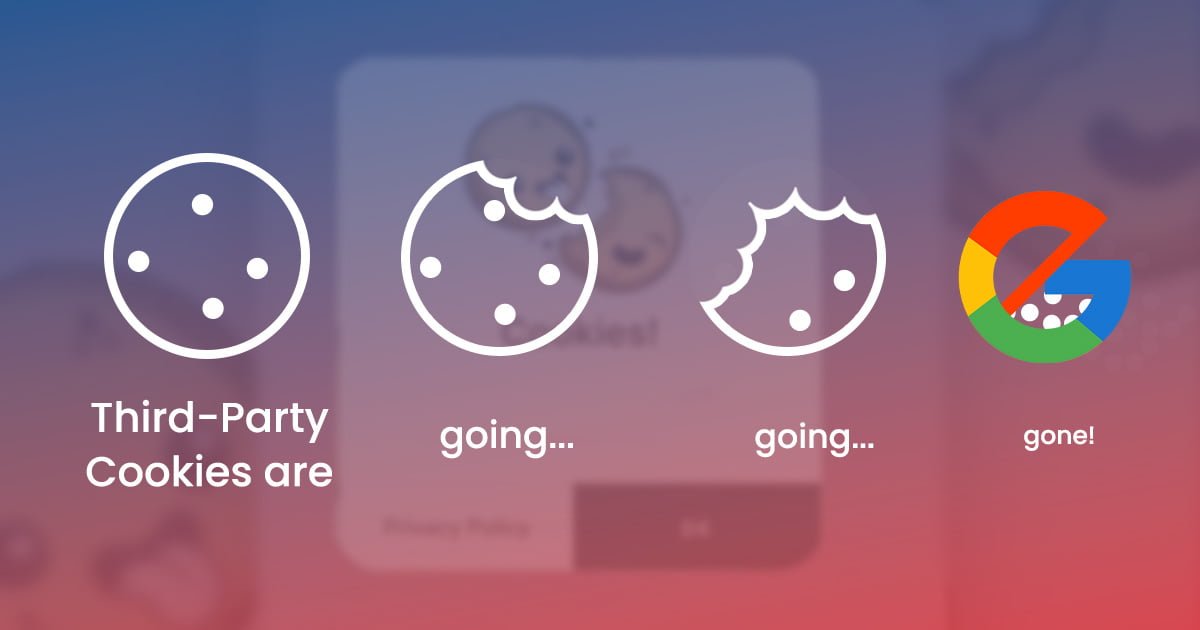Imagine, following the Prime Minister’s visit earlier this week, you find yourself feeling intrigued and searching for vacation rentals in Lakshadweep. You are exploring websites, and enjoying pictures of sunsets and sandy beaches. Despite being captivated, you opted to postpone your vacation plans for another year. A few days later, Lakshadweep vacation ads seem to be omnipresent across the websites you visit. Coincidence? Not quite. The ads are a result of a trail you left in your web browser, where a third-party cookie stored your information, tailoring targeted advertisements for you.
Of the 8 types of cookies utilised by Google, first-party and third-party cookies hold utmost importance. While third-party cookies are set to disappear, first-party cookies will persist. First-party cookies enhance user experience on your site by tracking login credentials and language settings. On the other hand, third-party cookies, gathered by external entities, monitor user behaviour across various sites, supplying valuable data for targeted marketing in digital advertising.
Despite being advertisers’ allies for over a decade, third-party cookies are facing extinction as Google initiates their phase-out. This shift prompts a crucial question: How will advertisers adapt to thrive in this changing landscape? Let’s delve into the blog to explore the answers.
First let’s take a look on why and how these cookies are saviours for advertisers:
- Precision Targeting: Third-party cookies empower advertisers to track users’ online activities, allowing for precise targeting based on user behaviour, interests, and preferences.
- Personalised Campaigns: These cookies enable the delivery of personalised content, ensuring that advertisements resonate with specific demographics, increasing the likelihood of user engagement.
- Efficient Campaign Optimization: Advertisers leverage third-party cookie data to measure campaign performance, refining strategies by analysing metrics such as click-through rates, conversion rates, and user interactions for optimal efficiency.
- Effective Retargeting: By storing user data and tracking their interactions, third-party cookies facilitate effective retargeting efforts, ensuring that users who have shown interest in a product or service continue to see relevant ads across different websites.
- Comprehensive User Insights: Third-party cookies provide a holistic view of the customer journey across various sites, allowing advertisers to gain valuable insights into user behaviour, preferences, and touchpoints, ultimately enhancing the overall effectiveness of marketing campaigns.
Despite their benefits for advertisers, it’s time to part ways with cookies as they pose privacy concerns for users by tracking and collecting personal information without explicit consent. This may lead to users feeling surveilled and compromising online privacy. In the bustling ad landscape, outshine the competition in the Post-Cookie Era!
Follow these 5 simple tips to secure your spot and stand out:
- More power to Zero and First Party Cookies: In a cookie less era, prioritise first and zero-party data, the new keystones. Zero-party data is willingly shared by customers, offering insights through surveys or inquiries. First-party data, obtained with user consent via methods like online surveys and CRM systems, provides details such as email addresses and purchase history.
- Simplify Data Sharing For Customers: Boost B2B feedback by incentivizing data sharing through rewards like exclusive content or event tickets. Implement timely improvements based on feedback, showcasing results to encourage ongoing participation. Ensure compliance with data privacy laws for customer trust.
- Stay Updated about Data Privacy Laws: Stay ahead in the evolving data privacy landscape. Adhere to state, national, and international laws by creating a flexible data ecosystem, ensuring compliance through privacy automation and self-service features to prevent legal repercussions.
- Focus on Contextual Based Strategy: Shift away from third-party cookies for targeted ads. Utilise contextual advertising and IP targeting aligned with your audience’s interests. Explore creative strategies, like sponsoring conferences, for firsthand customer data gathering.
- Improve Data Strategy: Customer data is paramount in B2B marketing, but with the farewell to third-party cookies, a robust data strategy is imperative. Embrace reliable tools like Google Analytics and CRM for first-party data collection, learn advanced techniques, and adopt suitable metadata management tools to navigate this evolving landscape effectively.
While third-party cookies may fade away, Gr8 partnerships endure!
Explore cutting-edge marketing strategies to outshine the competition. In an era of evolving policies, trust us for up-to-date and innovative marketing solutions tailored to the new age.
Please write to us at https://www.gr8brews.com/contact-us/ and we will get back to you.

